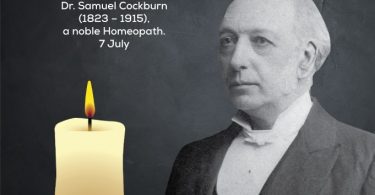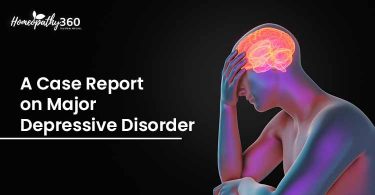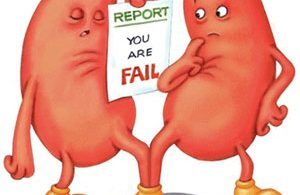Author:
Dr B S Suvarna
B.A, D.I.Hom[Lond.], M.I.H, PhD, PGDPC (Psychotherapy & Counselling, USA)
HOMOEO PHYSICIAN
MAMTHA HOMOEO CLINIC
Jeevan Shanthi
Karnataka State, India
As mentioned in the introduction the term “alternative medicine” covers a vast range of activities , the only thing they have in common being that they are not taught at a western medical school . It is important to recognize that some of the these activities have long traditions that pre-date modern medicine while others are relatively new .
Group—1, Complete Systems Of Healing :
There are systems of healing which have had a theoretical base as to the causation of disease , they have a diagnostic investigative and therapeutic understanding which share some similarities with orthodox medicine , some of these systems have been around for many thousands of years , others are relatively new . The major categories that are available widely around the world are :-
- Homoeopathy
- Acupuncture or Traditional Chinese medicine
- Osteopathy and chiro-practice
- Herbal medicine
- Naturopathy
- Ayurvedic medicine
- Yoga
Most of these systems of healing have an educational frame work , publish ethical guide lines and attempt to regulate their practitioners in the same way as any orthodox medical council might regulate doctors . They consider themselves , by and large to be competent enough to deal with most of the problems that come their way although most practitioners tend to suggest that many acute and life threatening problems are better dealt with by orthodox medicine .
Group-2
Diagnostic Methods
These are ways of determining the presence or absence of disease using methods not normally associated with traditional medicine, e.g.
- Iridology—As a test for hidden disease
- Kinesiology—As a test for allergies
- Hair analysis —As a test for Nutrition defects
- Kirlian Photography/ aura diagnosis — As a test for levels of well being
- Bio feed back
Group-3
Therapeutic Methods
These treatments again are not found in traditional medicine and the list is very long . Most practitioners of these therapies do not claim that their treatments can and do work , it is probably within this group that the term complimentary is most suitable .The treatments “complement” or “supplement” what is already on offer . this group includes ;
- Aroma therapy
- Bach flower remedies
- Bio-chemic tissue salts
- massage or therapeutic touch
- Reflexology
- Hydrotherapy
- Hypnotherapy
- Spiritual healing
Group—4 Self help Measures
Group -4
Self help measures
This group includes the package of self-help measures where patients are encouraged to undertake certain practices and exercises that will either diminish their symptoms , improve their health or maintain their well-being , these self help measures include ;
- Alexander technique
- Auto genic training
- Bates eye exercises
- Bioenergetics
- Aerobics and other exercise routines
- T’ai –chi’uan
- Breathing and relaxation techniques
- Meditation
- Visualization
- Fasting or dieting
Complete Systems Of Healing; Homoeopathy.
Homoeopathy is a “system of therapeutics” or treatments which use very minute amounts of natural products to aid the patients natural process of recovery , it has achieved wide acceptance in the UK because of the much publicized link with the royal family and because it is one of the few alternative therapies that is available on the national health service .
Homoeopathy as an approach to treatment was established by a German physician Dr.Samuel Hahnemann, who published the first basic text book in 1810 . The principles involved in homoeopathic prescribing were known to previous physicians and had been used in Ayurvedic medicine (the natural medicine of India) for many centuries before Hahnemann , it was he however who spent most of his life establishing the modern foundation of homoeopathy . The basic principles include the notion encapsulated in the Latin phrase “Similia similibus curenter”—“like cure likes”. Hahnemann observed that many treatments used to treat disease actually caused the symptoms produced by the disease itself . His initial discovery was with quinine which was and is still used for the treatment of malaria , quinine will produce the high temperatures , sweats and rigors which Hahnemann observed that many treatments used to treat disease actually caused the symptoms produced by the disease itself , his initial discovery was with quinine which was and is still used for the treatment of malaria . Quinine will produce the high temperatures , sweats and rigors which characterize a malarial attack . Hahnemann wondered whether this principle of “like cures like” could be used for treating other diseases , he set about systematically testing over 4000 substances , a process known as “proving” by taking them in high doses himself and nothing all the symptoms they produced , he then gave these substances in dilute form to patients with symptoms of diseases and noted they improved e.g, “Nux-vomica” (obtained from the poison nut tree) will in large doses produce vomiting , abdominal cramps and diarrhoea . If given to patients suffering with these symptoms , Nux vomica is very effective remedy . Hahnemann’s second discovery which is the most controversial of homoeopathic principles is that the more dilute the remedy , the more powerful its effect is . Thus he established a method of manufacturing remedies which is still in use today .
The Manufacture Of homoeopathic Remedies
After initial proving , the animal , mineral or plant extract is preserved in an alcohol solution and the active ingredient is extracted , this forms the “mother tincture” this tincture is then systematically diluted to produce the various homoeopathic strengths ,each time the solution is diluted it is “potentised “by shaking in a process known as Succussion. It is believed by homoeopaths that this process affects the molecular structure of the liquid (water or alcohol) in such a way that the “foot prints” of the active ingredient are imprinted on each molecule , so that in extreme dilutions , even though no active ingredient is present “The energetic memory”of the remedy is transferred to the molecular structure of the dilution .a ten fold dilution is expressed by the symbol X a hundred fold dilution by the symbol C and a thousand fold dilution by the symbol M .
Thus “Nux vomica 6x” is an extract of the active substance diluted to 10 or 1/100000 of its original strength . Homoeopathic remedies are available over the counter to the public at the small dilutions of 6x , while homoeopaths prescribe 1M dilutions believing them to be most powerful remedies , science indicates that above 1029 dilutions no molecule exists of the original substance and scientific community does.
Not accept the claims made by homoeopaths that these remedies can have any effect other than as a placebo . It is this second principle of homoeopaths that understandably prevents scientists from accepting homoeopathy as a valid approach to treatment .
Hahnemann’s third principle was that taking a case history in homoeopathy involves an” holistic “ approach , i.e, the patient’s totality of symptoms as well as his personality should form part of the assessment before a remedy is prescribed . This leads to patients with identical diseases e.g, asthma or the common cold , being offered completely different remedies , because their personalities are different or what are known as the “peculiars” (specific individual symptoms) vary ,homoeopaths look for “peculiars” e.g, the catarrh is worse on the left side than the right , the pain is worse in the morning than at night , the skin changes color when the room temperature changes as very significant pointers to the remedies required , thus a proper homoeopathic case history may take as long as one or two hours to assemble .
The final principle of homoeopathic medicine is the “law of directions”. This law maintains that severe disease improves by symptoms moving from inside the body outwards , i.e, as asthma improves the patient may develop eczema (a skin condition) ,homoeopaths believe they can treat that life threatening conditions should be assessed by a medically qualified doctor . where science has studied homoeopathy , it has come up with a series of not very convincing trials and an honest onlooker would come to the conclusion that the jury is still out as to the effectiveness of homoeopathy in treating disease , such trials as have been conducted ,do not provide enough evidence to satisfy the skeptics that homoeopathy is not a placebo . Laboratory experiments and the treatment of animals by homoeopathy have all indicated that some changes occur and that for instance the prevention of recurrent abortions in pigs is successful with homoeopathic remedies . These studies are felt by supporters of homoeopathy to over come the suspicion that homoeopathy is “only a placebo” as animals are not thought to respond to placebos . The debate is centering around the “transfer of energy “ question and paradoxically , high –tech medicine through nuclear magnetic resonance imaging (which uses a scanning machine, that is able to produce detailed pictures of the behaviour of molecules and atoms ) may help to demonstrate how vibrated dilutions of homoeopathic remedies have different energy patterns from un vibrated ones , a central principle involved in the manufacture of homoeopathic remedies .





